QuestionHi!,
have a Maltipoo, a little over 2 years old. All of the sudden about 2 months ago he started peeing as soon as he sees his leash in my hand to go outside. He doesn't get excited, he gets scared. He cowls down like he did something wrong and then urinates everywhere. Then he started not coming out of his crate on top of that. When we would come back inside he would attack his leash and naw and scratch at it like it was a bone so i thought maybe i should try getting a new leash, that didn't work. I brought him to the vet, doc said it submissive urination and gave me tips on how to stop it and i've been doing it but it hasn't worked at all. Nothing trumatic happened to him during a walk for him to act this way and I got him when he was about 8 months old, so nothing happened to him before I got him. Is there something mentally wrong with my dog? Now i'm getting nervous. Should i bring him to obedience school? Please help me
AnswerGreetings, and thank you for contacting All Experts!
It may be difficult to determine what may have caused your maltipoo's change of heart about the leash. Most dogs associate the leash with going outdoors and look forward to seeing it, your dog instead seems like he has decided that the leash brings negative emotions such as fear. If you are absolutely sure that his body language is fear (and cowering is a sign of this) then perhaps something happened one day when you put the leash on. It could be something as innocent as mistakenly pinching the skin a bit when putting it on or perhaps hearing a scary noise that startled him while you put it on. So the goal here is changing his underlying emotional response about the leash by using positive associations.
This will take some baby steps and a choice of high value treats. Invest in 100 dollar treats, these are sliced hot dogs, freeze dried liver, pieces of left over steak or some pieces of boneless and skinless chicken, choose anything that makes your maltipoo drool. Use these treats only for your behavior modification sessions.
Now work on this exercise: make a sound with your mouth, anything, a whistle, a smacking noise, just not words. Place a treat at your eye level and as soon as your dog looks at you, give the treat. Repeat-repeat-repeat. The sequel is as such: you make sound with your mouth with treat at eye level/dog makes eye contact/you give treat. Do it 10-15 times until your dog gets a hang of it. Timing is of the essence:the second your dog looks at you the treat is delivered.
At some point something wonderful will happen: your dog will look up at you in the eyes automatically when you make the noise in anticipation of the treat. By doing this you have taught your dog to focus on you and that eye contact is a good thing. Practice also from a distance, let your dog sit and move a few steps away, make the noise with your mouth and your dog should come to you for a treat. Now you can apply this exercise successfully for behavioral problems and this is how:
Get the leash and place it in the middle of the living room. He should get curious and go near it. As soon as your dog goes near it, make the noise in your mouth and he should come to you looking at you for the treat. Repeat. Your dog needs to learn that good things happen when he gets near the leash. Now work on this a bit.
Then upgrade: sit down on the couch and get the leash and hold it in your hands, as soon as he gets near it or sniffs it make the noise with your mouth with treat at eye level and right when he looks at you give a treat. Then upgrade: make the leash clip but without clipping it on him, make noise with your mouth and give treat. You need to teach him that the clipping noise brings great things. Repeat, repeat, repeat.
Then upgrade: still while sitting on the couch make the clipping noise gradually closer to his collar, but still without clipping it on to his collar. Here is the sequence: clipping noise/ noise with your mouth and treat at eye level/ dog makes eye contact/ give treat. Try to work very quickly in delivering the treat after you make the clipping noise, you want to not give him time to think about peeing. It may help to toss the treat at a distance so he follows it. Repeat, repeat, repeat. Then still sitting on the couch, snap the leash on this time and continue the sequence of noise with your mouth, eye contact and tossing the treat closely nearby. Then snap the leash off, repeat sequence, then put it on, repeat sequence.
Finally, once he no longer fears the clipping noise, head near the door, clip the leash on, make the noise with your mouth with treat at eye level give treat (or better a pile of treats on the floor) and go outside.
Now if your dog ever pees submissively in this exercise, it means you need to step back a bit because your are going too fast for comfort. So go a few steps back and work from there. Please realize that once a behavior puts root, it takes double or triple the time to undo it.
About not coming out the crate, place a pile of tasty treats to wait for him when you open the cage. He should start loving coming out! Your dog does not sound like he is mentally wrong, he sounds though like a soft, sensitive dog easy to startle and make negative associations. You simply need to change his state of mind over things, and most dogs make positive associations with treats.
Obedience school may help him gain confidence. For instance, you can teach him to sit on command when you come home from a walk and give a treat for sitting. This will give him an alternate behavior to the biting/attacking the leash. Training can give him more structure, teach him to sit before being fed, before giving him a toy, before taking the leash off. This is operant conditioning at the best, the dog learns to work to earn stuff we give for granted. It makes dogs more obedient and better under control.
Clicker training can really do a lot to help dogs as yours in helping them gain confidence. A great book is Karen Pryor's ''Click for Joy''. Agility also can do a lot in building confidence. Just use baby steps, and with positive associations you can change your dog's emotional response to things and ultimately make him a happier and healthier dog. I hope this has helped, do not get discouraged, I deal with many dogs acting just like yours and with positive results, my very best wishes!

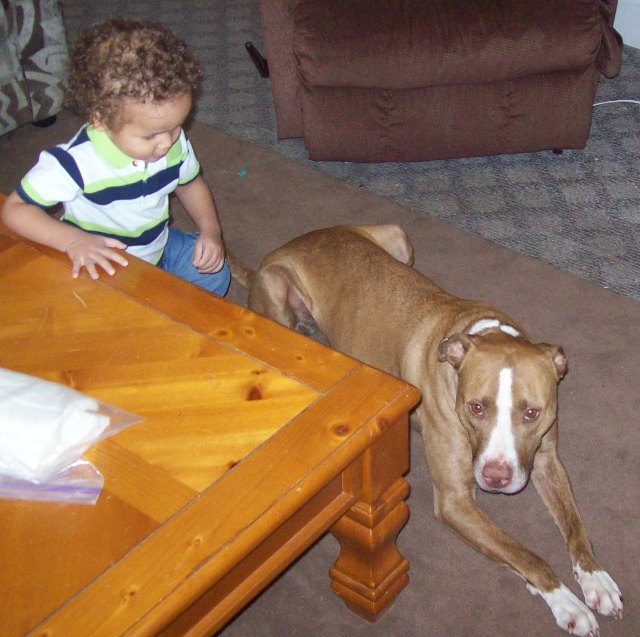 my older dog is house broken but not
QuestionQUESTION: I got a 9 yr old dog from a shelter a
my older dog is house broken but not
QuestionQUESTION: I got a 9 yr old dog from a shelter a
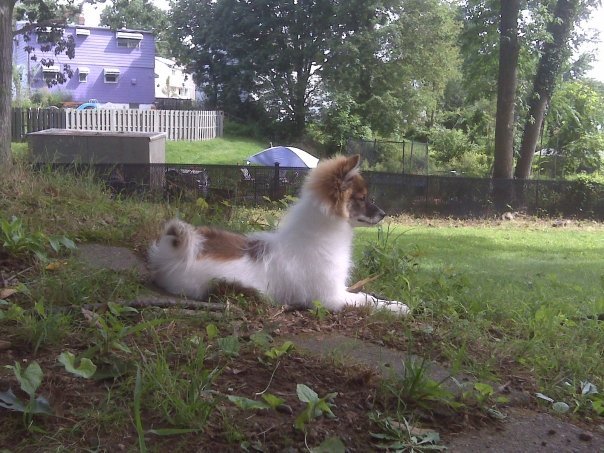 Not sure what my dog is
Question
Ella
I adopted my dog through a rescue s
Not sure what my dog is
Question
Ella
I adopted my dog through a rescue s
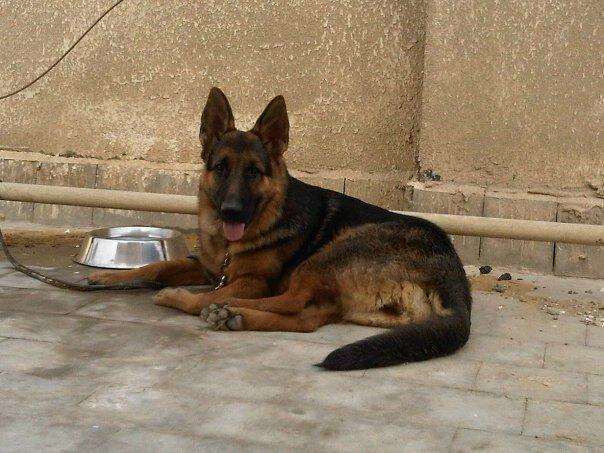 Delayed German Shepherd Heat
QuestionMy German Shepherd
QUESTION: I have a Ge
Delayed German Shepherd Heat
QuestionMy German Shepherd
QUESTION: I have a Ge
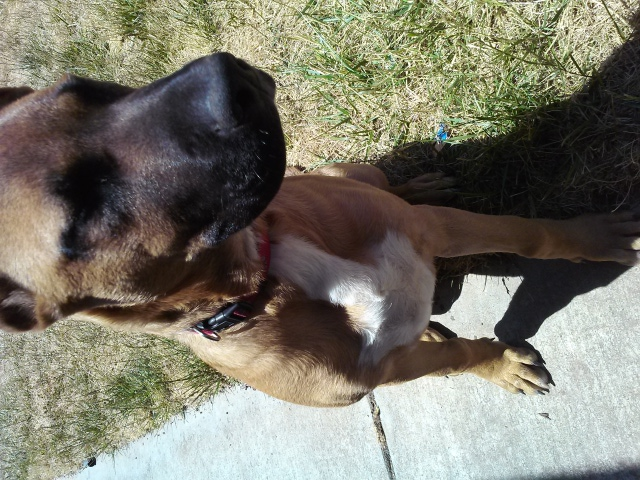 dog breed unknown
Question
dog breed unknown dog breed unknown &nbs
dog breed unknown
Question
dog breed unknown dog breed unknown &nbs
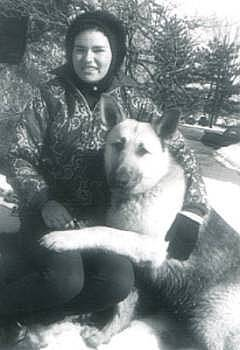 What dog is right for me?
QuestionHi,
my name is Miriam and I am 12 years old.
What dog is right for me?
QuestionHi,
my name is Miriam and I am 12 years old.